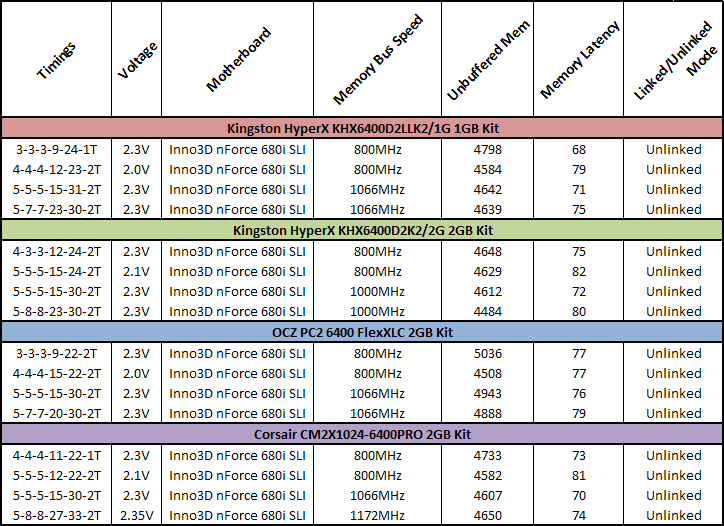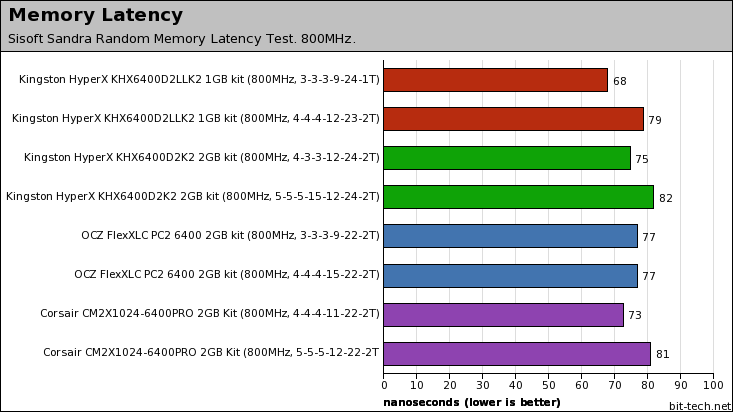Kingston vs OCZ DDR2-800MHz Memory
February 23, 2007 | 16:18

Test Setup
- Synthetic Testing: Intel Core 2 Extreme X6800 (operating at 2.93GHz - 11x266); Inno3D 680i SLI motherboard; NVIDIA 7600GS Video Card, Seagate 7200.9 200GB 7200RPM SATA 3Gbps hard disk drive; OCZ GameXStream 700W power supply unit; Windows XP Professional Service Pack 2; DirectX 9.0c; NVIDIA Forceware 93.71 WHQL.
- Real World Testing: Intel Core 2 Extreme E6400 (operating at 2.13GHz - 8x266); Inno3D 680i SLI motherboard; NVIDIA 7600GS Video Card, Seagate 7200.9 200GB 7200RPM SATA 3Gbps hard disk drive; OCZ GameXStream 700W power supply unit; Windows XP Professional Service Pack 2; DirectX 9.0c; NVIDIA Forceware 93.71 WHQL.

PC6400 / 800FSB testing
We tested the memory at its stock speed of 800MHz, at both its rated timings and the fastest stable timings we could achieve with extra voltage.


MSI MPG Velox 100R Chassis Review
October 14 2021 | 15:04








Want to comment? Please log in.